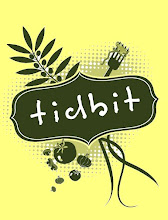....aspettando la befana...
Sì, sta per arrivare! Proprio lei, la simpatica vecchietta con la scopa che fa contenti molti bambini regalando loro bei doni e tanti dolci. A voi cosa portera' quest'anno la befana?

La Befana
(from wikipedia)
La Befana is a character in Italian folklore, similar to Saint Nicholas or Santa Claus. The character may have originated in Rome, then spread as a tradition to peninsular Italy.
Her name derives from the festival of Epiphany, and she visits all the children of Italy on the eve of 6 January to fill their socks with candy if they are good or a lump of coal if they are bad. Being a good housekeeper, many say she will sweep the floor before she leaves. The child's family typically leaves a small glass of wine and a plate with a few morsels of food, often regional or local, for Befana.
She is usually portrayed as an old lady riding a broomstick through the air wearing a black shawl and is covered in soot because she enters the children's houses through the chimney. She is often smiling and carries a bag of hamper filled with candy, gifts, or both.
Legend has it that La Befana was approached by the astrologers (the three kings) a few days before Christ's birth. They asked for directions to where the Christ child was, but she did not know. She provided them with shelter for a night, as she was considered the best housekeeper in the village with the most pleasant home. They invited her to join them on the journey to find the Christ child, but she declined, stating she was too busy with her housework. Later, La Befana had a change of heart, and tried to search out for the astrologers and the Christ child. That night she was not able to find them, so to this day, La Befana is searching for the Christ child. She leaves all the good children toys and candy, while the bad children get coal.
Another legend takes a slightly darker tone as La Befana was an ordinary woman with a child that she greatly loved. However, her child died, and her resulting grief maddened her. Upon hearing news of Jesus being born, she set out to see him, delusional that he was her son. She eventually met Jesus and presented him with gifts to make him happy. The infant Jesus was delighted, and he gave La Befana a gift in return; she would be the mother of every child in Italy.
Also, tradition avers that if one sees La Befana one will receive a thump from her broomstick, as she doesn't wish to be seen. This aspect of the tradition may be designed to keep children in their beds while parents are distributing candy (or coal) and sweeping the floor on Epiphany Eve.
History
The name Befana is derived from the mispronunciation of the Italian word epifania (English: epiphany).
The tradition of La Befana may incorporate pre-Christian popular elements, adapted to Christian culture and related to the celebration of the New Year. Historian Carlo Ginzburg relates her to Nicevenn. The old lady character should then represent the old year just passed, ready to be burned in order to give place to the new one. In many European countries the tradition still exists of burning a puppet of an old lady at the beginning of the New Year, called Giubiana in Northern Italy, with clear Celtic origins.
An interesting theory connects the tradition of exchanging gifts to an ancient Roman festivity in honour of Ianus and Strenia (in Italian a Christmas gift is called strenna), celebrated at the beginning of the year, when Romans were used to giving each other presents
La Befana Today
Traditionally, all Italian children may expect to find a lump of "coal" in their stockings (actually rock candy made black with caramel coloring), as every child has been at least occasionally bad during the year.
In the center of Rome, in Piazza Navona, a popular market, the Fiera della Befana takes place each year between Christmas and the Epiphany. There toys, sugar charcoal and candies are sold for the Roman children.
The Feast of La Befana in Rome has been immortalized in four famous sonetti in Roman dialect by the nineteenth century Roman poet Giuseppe Gioacchino Belli.
There is a poem about La Befana, which is known in slightly different versions throughout Italy. Here is one of the versions:
La Befana vien di notte La Befana comes by night
Con le scarpe tutte rotte With her shoes old and broken
Col vestito alla romana She comes dressed in the Roman way
Viva, Viva La Befana! Long life to the Befana!


No comments:
Post a Comment